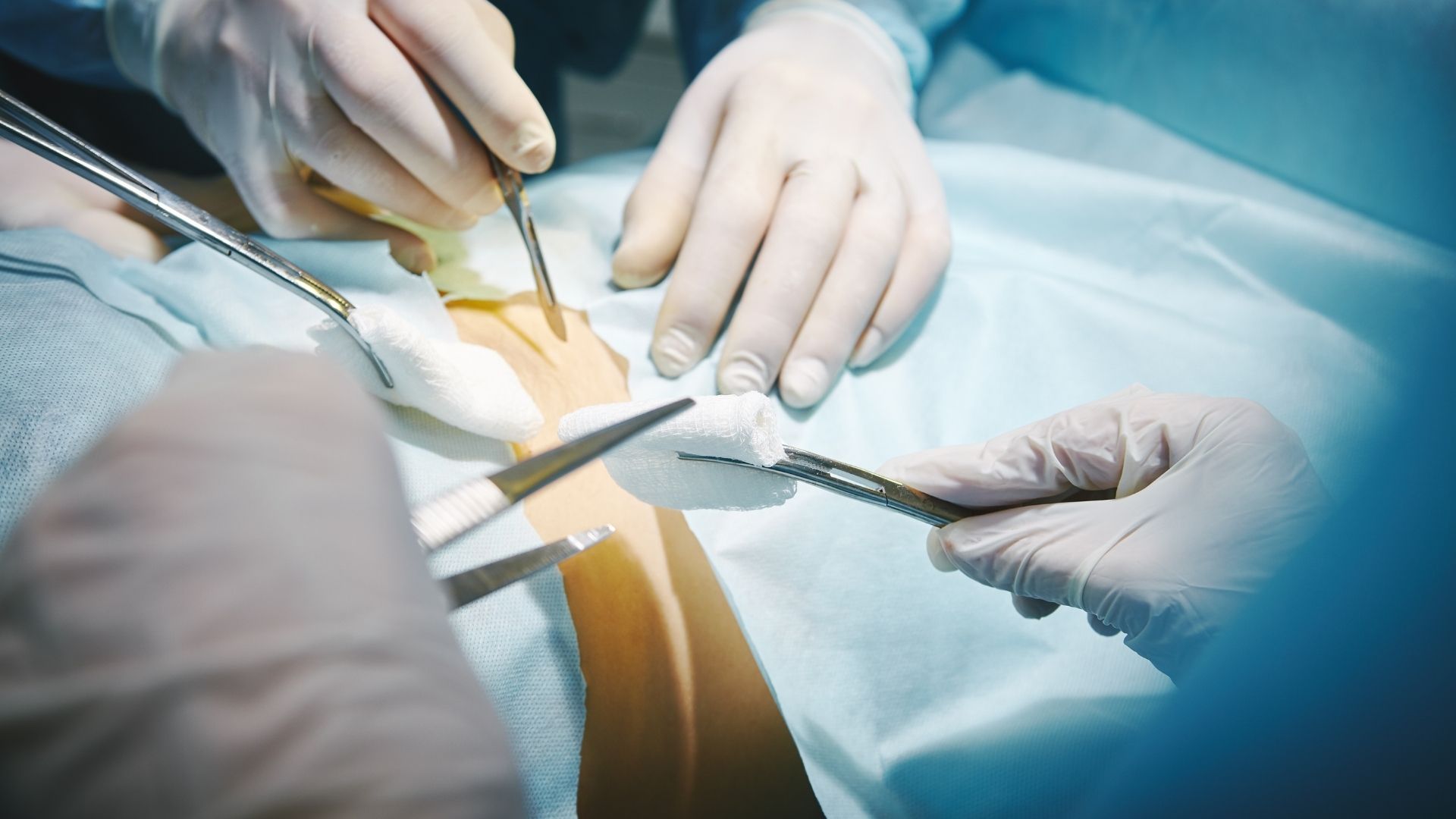A laminectomy is a common spinal decompression surgery that can take anywhere from a few weeks to several months to recover from depending on the age of the patient and the number of vertebrae involved.
In this article, we will help to provide an overview of what laminectomy surgery is and what it hopes to achieve. We will also discuss how physical therapy can help manage pain, function, and mobility after surgery.
What is a Laminectomy?
A laminectomy is a surgical procedure used to increase the space within the spinal canal by removing the lamina from the vertebral arch, also known as decompressive surgery.
The goal of a laminectomy is to enlarge the vertebral canal and relieve pressure on the spinal cord by removing the laminae and associated spinous processes within the affected region of the vertebral column.
Laminectomies can be performed in the cervical, thoracic or lumbar regions of the spine and may also be performed concurrently with a spinal fusion, which permanently joins two or more vertebrae together.
This procedure is done when more conservative treatments like medication or injections are unable to alleviate symptoms.
Anatomy of the Spine
The spinal cord is located within the vertebral column, which is responsible for protecting and supporting the spinal cord. The vertebral column is composed of 24 separate bones, called vertebrae. For the most part, each vertebra is made up of a vertebral body, transverse and spinous processes, pedicles and laminae.
Each vertebra has a hole in it, called the vertebral foramen that is bound by the vertebral body at the front, the pedicles at the sides and the spinous process and laminae at the back. Together, these vertebral foramens combine to form the vertebral canal, which is where the spinal cord lies.
The spinal cord is composed of different spinal segments, each of which give rise to a pair of spinal nerves that exit through the intervertebral foramen on the left and right side of the body. These spinal nerves supply sensory and motor innervation to a corresponding region of skin and specific muscles.
If too much pressure is placed on a specific spinal segment or spinal nerve, sensory changes or muscle weakness may be observed. To reduce this pressure, additional space can be created for the spinal cord by performing a laminectomy, where laminae and spinous processes are removed from a specific section of the vertebral column[i].
Why is a Laminectomy Done?
A decrease of space in the spinal canal, also referred to as spinal stenosis, can occur naturally with age or from osteoarthritis[ii]. Narrowing of the spinal canal places pressure on the nerves, resulting in weakness or numbness down the arms and legs. When the vertebral canal begins to narrow, pressure builds on the spinal cord or spinal nerves in the neck or back. This narrowing can be caused by problems with the bones, joints, or discs.
Overgrowths or bony spurs that develop as a natural part of aging can also cause narrowing of the canal. The added pressure that is generated from these conditions can produce symptoms of numbness or weakness in the arms or legs, cramping or pain in the neck or back, and difficulty with balance[iii].
The goal of a laminectomy is to enlarge the vertebral canal and relieve pressure on the spinal cord by removing the laminae and associated spinous processes within the affected region of the vertebral column. Laminectomies can be performed in the cervical, thoracic or lumbar regions of the spine and may also be performed concurrently with a spinal fusion, which permanently joins two or more vertebrae together.
Laminectomy Post-Surgical Care
Following surgery, pain management is a priority to help patients return to activities of daily living. To manage pain successfully, both medication and activity modifications are typically utilized. Activities that involve sitting or standing for excessive periods of time or require a large amount of twisting or bending of the spine, must be modified, or avoided to reduce strain on the spine.
In addition, proper care is required to ensure the incision heals and to avoid infections and other complications. Physical therapy should be started as soon as possible after surgery to promote patient mobility and protect against future injury.
Laminectomy Surgery Rehabilitation
Rehabilitation programs following a laminectomy will focus on post-operative mobility, patient education and pain management. An individualized physical therapy treatment plan will be tailored to the patient’s needs, addressing strength, flexibility and mobility impairments.
During the acute phase of recovery, physiotherapy will focus on early mobilization (getting up and walking) and gentle exercise. Early mobility will reduce the risk of secondary complications such as blood clots, increased pain and infection.
With time, core stability exercises and spinal range of motion (ROM) exercises will help to restore movement within the trunk[iv]. Range of motion exercises will help regain flexibility in the spine to prevent joint stiffness and decrease pain. Tailored resistance exercises for back muscles will help to increase strength and restore muscle function.
Identifying proper movements and postures and avoiding strenuous activities will be critical during the recovery process. Working together with the therapist to properly progress all exercises will be essential to restore movement, safely return to daily activities of living and prevent future injury.
At Propel Physiotherapy, our team of experienced clinicians are skilled in the treatment of a variety of complex conditions. Physical therapy plays an integral role in the management of pain and function post-operatively.
Our physiotherapists can provide supplemental therapy in hospitals and at home once you have been discharged to help meet all your rehab needs. If you or someone you know has had a laminectomy, book an appointment with one of our therapists so they can help you return to your everyday life.
References
[i] Rhee JM, Basra S. Posterior surgery for cervical myelopathy: laminectomy, laminectomy with fusion, and laminoplasty. Asian Spine J. 2008;2(2):114-126. doi:10.4184/asj.2008.2.2.114
[ii] An evidence-based clinical guideline for the diagnosis and treatment of degenerative lumbar spinal stenosis (update). doi: 10.1016/j.spinee.2012.11.059
[iii] https://www-sciencedirect- com.myaccess.library.utoronto.ca/science/article/pii/B9780702040863000357?via%3Dihub
[iv] Gilmore S, McClelland J, Davidson M (2016) Physiotherapy management of patients undergoing lumbar spinal surgery: a survey of Australian physiotherapists. New Zealand Journal of Physiotherapy 44(2): 105-112. doi: 10.15619/NZJP/44.2.06.
Written by









